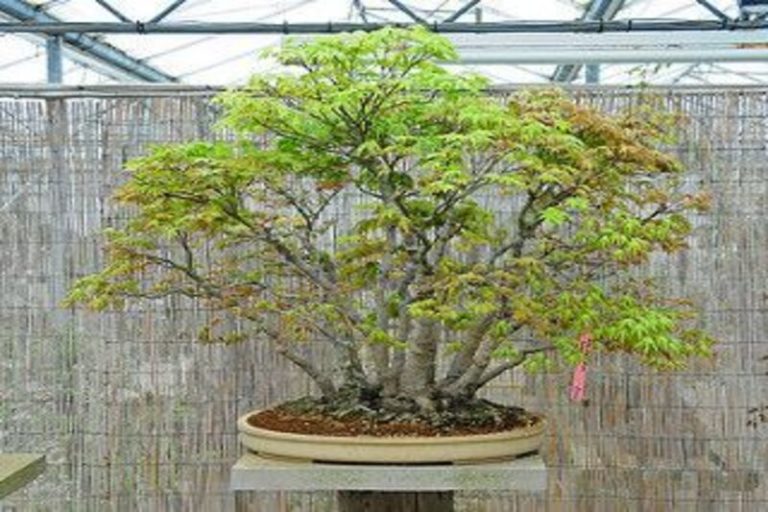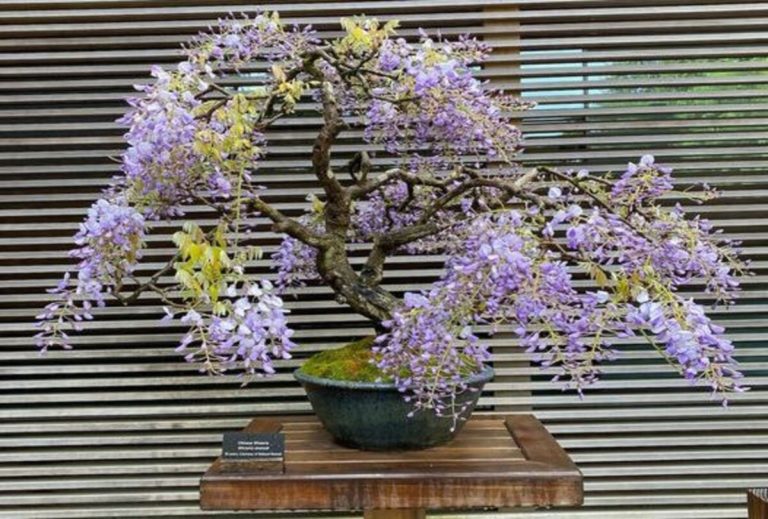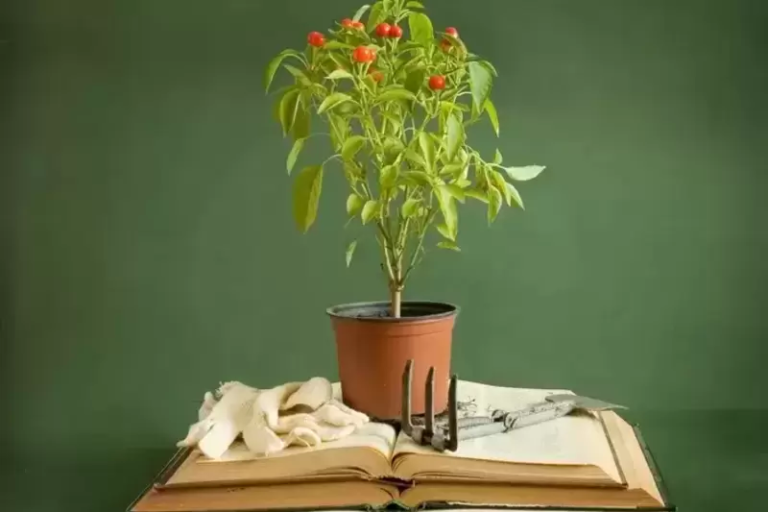Bonsai Mudmen: Adding Character and Charm to Your Bonsai Display
Bonsai Mudmen are tiny figurines that add a special touch to your bonsai display. They have a rich history in Chinese and Japanese gardening and play a vital role in storytelling through bonsai arrangements. In this article, we will explore the significance of Bonsai Mudmen and provide insights into selecting and placing them to enhance your bonsai experience.
What is Bonsai Mudmen?
Bonsai Mudmen are small clay or ceramic figurines used in bonsai displays. They add character and charm to the arrangement, mimicking human presence in the miniature landscape. Mudmen have cultural significance and are often arranged to tell stories or create a sense of interaction with the bonsai tree.
Selecting the right Mudmen involves considering the style and theme of the display, while proper placement creates focal points and guides the viewer’s attention. Regular cleaning and protection from sunlight and moisture are necessary for maintenance. Bonsai Mudmen enhance the natural appearance of the arrangement and contribute to its overall aesthetic appeal.
History and Origins of Bonsai Mudmen
The history and origins of Bonsai Mudmen can be traced back to traditional Chinese and Japanese gardening practices. These miniature figurines have a rich cultural heritage and have been an integral part of bonsai displays for centuries.
In China, the use of figurines in gardening dates back to the Tang Dynasty (618–907 AD). The concept of “Scholar’s Rocks” emerged during this period, where rocks were carefully chosen and arranged to create miniature landscapes. Figurines, including Mudmen, were added to these landscapes to provide scale and enhance the natural aesthetic.
In Japan, the tradition of using Mudmen in bonsai displays began during the Edo period (1603–1868). Influenced by Chinese gardening practices, Japanese bonsai artists embraced the use of figurines to bring life and storytelling elements to their miniature landscapes.
The figurines, made of clay or ceramic, were meticulously crafted with intricate detailing and realistic features. They were designed to depict various activities related to water, farming, fishing, or playing musical instruments. The Mudmen were positioned strategically within the bonsai display to create a sense of harmony and realism.
The cultural significance of Mudmen lies in their ability to tell stories and evoke emotions. They bring a human element to the miniature landscapes, fostering a connection between nature and the observer. The use of Mudmen in bonsai displays allows artists to create narratives, capture moments in time, or portray scenes inspired by folklore or daily life.
Over time, the art of crafting Bonsai Mudmen has evolved, with different styles and interpretations emerging. Today, these figurines continue to play an essential role in bonsai culture, enhancing the overall aesthetic appeal and adding a touch of charm and character to the miniature landscapes.
The history and origins of Bonsai Mudmen highlight the cultural exchange and artistic traditions between China and Japan. These figurines have become an iconic element of bonsai displays worldwide, capturing the imagination of enthusiasts and preserving the beauty of storytelling through the art of bonsai.
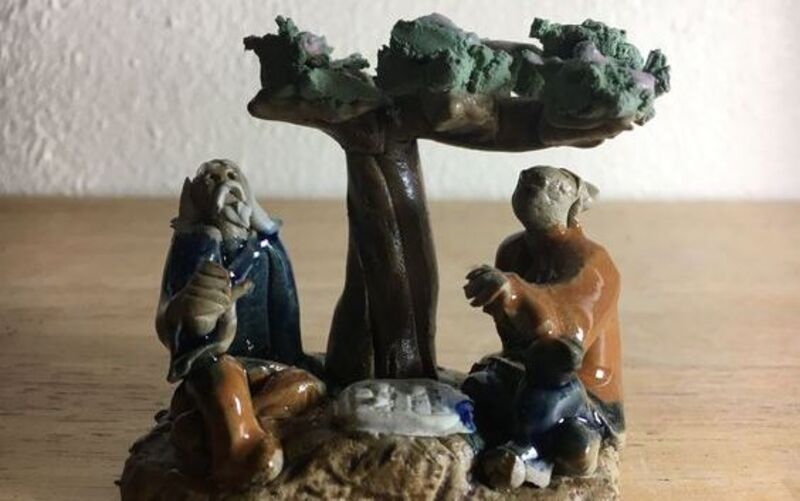
Bonsai Mudmen and Their Symbolism
Bonsai Mudmen carry deep symbolism within the art of bonsai and traditional gardening practices. These small figurines represent more than just decorative elements in the bonsai display; they hold meaning and symbolism that enrich the overall experience. Here are some key aspects of symbolism associated with Bonsai Mudmen:
Human Presence: Bonsai Mudmen symbolize the presence of humans within the miniature landscapes. They evoke a sense of connection between nature and people, highlighting the interdependence and harmonious relationship between humans and the natural world.
Storytelling and Narrative: Mudmen are often arranged in specific poses and activities that tell stories or depict scenes. They bring a narrative element to the bonsai display, allowing the viewer to imagine stories, folklore, or moments frozen in time. The storytelling aspect of Mudmen adds depth and emotional resonance to the arrangement.
Life and Vitality: Bonsai Mudmen symbolize vitality and life. By including figurines engaged in various activities such as farming, fishing, or playing music, they infuse the display with energy and a sense of liveliness. Mudmen remind us that bonsai is not just about capturing the beauty of nature but also about celebrating the vibrancy of life.
Balance and Harmony: The strategic placement of Mudmen within the bonsai display represents balance and harmony. They help create a visually balanced composition and guide the viewer’s attention. The harmonious arrangement of Mudmen and bonsai trees reflects the harmony and balance that are sought after in nature and in life.
Cultural Traditions: Bonsai Mudmen carry the cultural traditions and heritage of Chinese and Japanese gardening practices. They are a tangible representation of the historical connection between these cultures and the art of bonsai. The use of Mudmen in bonsai displays pays homage to the rich cultural legacy and artistic traditions.
Scale and Proportion: Mudmen provide scale and proportion to the bonsai arrangement. Their size in relation to the bonsai tree creates a sense of perspective and realism, enhancing the overall visual impact of the display. The proper placement of Mudmen ensures that the proportions between the elements are visually pleasing.
Bonsai Mudmen hold a symbolic significance that goes beyond their aesthetic appeal. They embody human presence, storytelling, vitality, balance, and cultural traditions within the bonsai display. Their inclusion adds depth, meaning, and a touch of human connection to the miniature landscapes, enriching the overall experience for both the creator and the observer.
Characteristics of the Bonsai Mudmen
Bonsai Mudmen possess distinct characteristics that make them unique and add charm to bonsai displays. These characteristics contribute to their overall aesthetic appeal and storytelling potential. Here are some key features and characteristics of Bonsai Mudmen:
Intricate Detailing: Bonsai Mudmen are crafted with meticulous attention to detail. From facial expressions to clothing and accessories, every aspect of the figurines is carefully designed and intricately executed. The level of detail adds realism and enhances the visual impact of the Mudmen.
Lifelike Poses: Mudmen are often depicted in lifelike poses that capture a specific moment or activity. Whether it’s a figure engaged in fishing, farming, or playing an instrument, the poses reflect movement and bring a sense of dynamism to the bonsai display. The lifelike poses contribute to the storytelling aspect of the Mudmen.
Naturalistic Features: The facial features and expressions of Bonsai Mudmen are crafted to resemble those of humans. Delicate facial features, expressive eyes, and subtle expressions bring a sense of realism and evoke emotions. These naturalistic features allow viewers to connect with the figurines on an emotional level.
Diverse Styles and Themes: Bonsai Mudmen come in a wide range of styles and themes, allowing for artistic expression and customization. From traditional to contemporary, from rustic to elegant, Mudmen can match the desired aesthetic and theme of the bonsai display. This diversity ensures that there is a Mudman to suit every artistic vision.
Material and Texture: Bonsai Mudmen are typically made of clay or ceramic, which gives them a tactile and earthy feel. The material choice adds texture and depth to the figurines, enhancing their visual appeal. The texture also helps create a contrast with the smooth surfaces of the bonsai tree and other elements in the display.
Scale and Proportion: Mudmen are designed to be in scale with the bonsai tree and other elements in the display. The size and proportions of the figurines are carefully considered to create a harmonious relationship within the miniature landscape. The proper scale ensures that the Mudmen do not overpower or detract from the overall composition.
Expressive Accessories: Bonsai Mudmen are often depicted with accessories that further enhance their character and narrative potential. These accessories can include fishing rods, farming tools, musical instruments, or even everyday objects. The inclusion of accessories adds layers of storytelling and allows for creative interpretation.
The characteristics of Bonsai Mudmen make them fascinating and versatile elements in bonsai displays. Their intricate detailing, lifelike poses, naturalistic features, diverse styles, and expressive accessories contribute to their charm and storytelling potential. By incorporating Mudmen into the bonsai arrangement, enthusiasts can create visually captivating and emotionally engaging miniature landscapes.
Selecting the Right Bonsai Mudmen
Selecting the right Bonsai Mudmen is an important aspect of creating a visually appealing and harmonious bonsai display. Here are some key considerations to keep in mind when choosing Mudmen for your arrangement:
Style and Theme: Consider the overall style and theme of your bonsai display. Are you aiming for a traditional, rustic, or contemporary look? Choose Mudmen that align with the desired aesthetic. For example, if you have a traditional Japanese-style bonsai, you might opt for Mudmen with kimono-clad figures or those engaged in activities associated with Japanese culture.
Quality and Craftsmanship: Assess the quality and craftsmanship of the Mudmen. Look for well-made figurines with attention to detail. Examine the material, finish, and overall durability of the Mudmen. High-quality craftsmanship ensures that the figurines will withstand the test of time and enhance the visual appeal of the display.
Proportions and Scale: Consider the proportions and scale of the Mudmen in relation to the size of your bonsai tree and other elements in the arrangement. The Mudmen should be in harmony with the overall composition, neither too large nor too small. Ensure that the figurines do not overpower the bonsai tree but rather complement it.
Personal Preference: Trust your personal preference and connection with the Mudmen. Choose figurines that resonate with you and evoke emotions. Whether it’s a particular pose, expression, or activity, select Mudmen that you find visually appealing and meaningful. Your personal connection to the figurines will enhance your enjoyment of the bonsai display.
Storytelling Potential: Consider the storytelling potential of the Mudmen. Think about how you can arrange them to create narratives or scenes within the bonsai display. Choose figurines that can be positioned to interact with the bonsai tree or other Mudmen, allowing for a dynamic and engaging composition.
Complementing Colors and Textures: Take into account the colors and textures of the Mudmen and how they will complement the colors and textures of the bonsai tree and other elements in the display. Look for harmonious color combinations or contrasting elements that add visual interest to the arrangement.
Versatility and Interchangeability: Consider whether the Mudmen you choose can be used in various bonsai displays or if they are specific to a particular arrangement. Opt for Mudmen that offer versatility, allowing you to experiment with different compositions and themes over time.
By considering these factors, you can select Bonsai Mudmen that enhance the overall aesthetic appeal, storytelling potential, and harmony of your bonsai display. Remember to trust your personal preference and enjoy the process of finding Mudmen that resonate with you and your artistic vision.
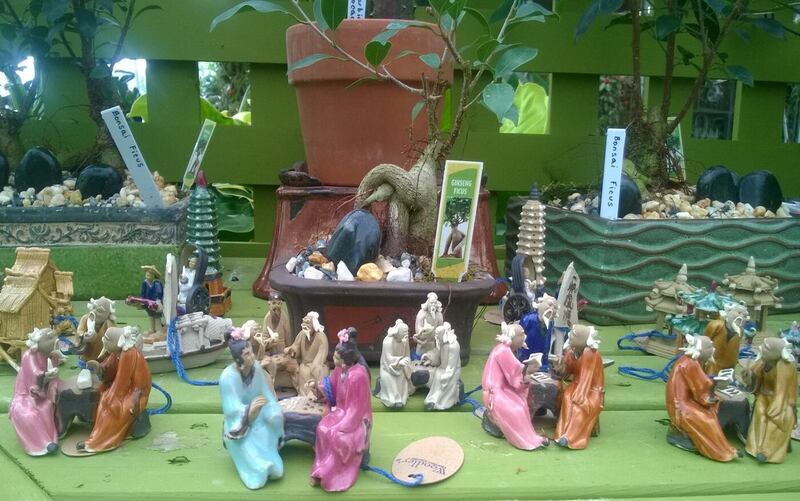
Benefits of Bonsai Mudmen
Adding Bonsai Mudmen to your bonsai display offers several benefits that contribute to the overall aesthetic appeal and storytelling potential of the arrangement. Here are some key benefits of incorporating Bonsai Mudmen:
Enhanced Natural Appearance: Bonsai Mudmen bring a sense of realism and naturalness to the bonsai display. By mimicking human presence within the miniature landscape, the Mudmen create a more complete and lifelike environment. They help to bridge the gap between the bonsai tree and the observer, fostering a stronger connection to nature.
Character and Charm: Mudmen add character and charm to the bonsai arrangement. Their intricate detailing, lifelike poses, and expressive features evoke emotions and captivate the viewer’s imagination. The presence of Mudmen enhances the overall visual appeal and creates a focal point within the display.
Storytelling Potential: Bonsai Mudmen offer storytelling potential within the bonsai arrangement. They can be arranged in specific poses and activities to depict narratives or scenes. Mudmen bring a sense of storytelling to the display, allowing for creative interpretation and engaging the viewer’s imagination. The inclusion of Mudmen adds depth and intrigue to the miniature landscape.
Scale and Proportion: Mudmen provide scale and proportion to the bonsai display. Their size in relation to the bonsai tree creates a sense of perspective and realism. Properly scaled Mudmen ensure that the visual balance and harmony between the elements in the arrangement are maintained. They contribute to a visually pleasing composition.
Interactive and Dynamic Compositions: Bonsai Mudmen can be positioned in a way that creates interactive and dynamic compositions within the bonsai display. They can be arranged to appear as if they are engaging with the bonsai tree or with other Mudmen. This adds a sense of movement and liveliness to the arrangement, making it more visually engaging.
Personal Expression and Customization: Incorporating Mudmen into your bonsai display allows for personal expression and customization. You can select Mudmen that resonate with your own preferences and create a display that reflects your artistic vision. The ability to choose Mudmen based on personal connection enhances the enjoyment and satisfaction of the bonsai hobby.
Cultural Significance: Bonsai Mudmen carry cultural significance, particularly in Chinese and Japanese gardening traditions. Including Mudmen in your bonsai display pays homage to these cultural legacies and adds depth and richness to the overall experience. It connects you to the historical roots of bonsai and adds a sense of tradition to your arrangement.
By incorporating Bonsai Mudmen into your bonsai display, you can enhance the natural appearance, add character and charm, unleash storytelling potential, maintain scale and proportion, create dynamic compositions, express personal creativity, and embrace the cultural significance of these figurines. They enrich the overall aesthetic appeal and make the bonsai experience more captivating and fulfilling.
Placing Bonsai Mudmen in Your Display
Placing Bonsai Mudmen in your display requires careful consideration to create a visually pleasing and harmonious arrangement. Here are some tips to help you position your Mudmen effectively:
- Focal Point: Choose a focal point in your bonsai display where you want to draw attention. This could be the bonsai tree itself or a specific feature like a waterfall or rock formation. Position one or more Mudmen near the focal point to create visual interest and direct the viewer’s gaze.
- Balance and Symmetry: Aim for balance and symmetry in the placement of Mudmen. Distribute them evenly throughout the display, ensuring that the visual weight is evenly distributed. For example, if you have a larger Mudman on one side, balance it out with smaller Mudmen or other elements on the opposite side.
- Proximity to the Bonsai Tree: Position Mudmen in proximity to the bonsai tree to create a sense of interaction and connection. Place them near the base of the tree or among the foliage to mimic human presence and engagement with nature. Avoid overcrowding the bonsai tree with too many Mudmen, as it can distract from the tree itself.
- Storytelling and Narrative: Arrange Mudmen to tell a story or depict a scene within the bonsai display. Consider their poses and activities to create a narrative. For example, a Mudman holding a fishing rod could be placed near a miniature pond, suggesting a fishing scene. Let your imagination guide you in creating engaging narratives.
- Scale and Proportion: Ensure that the Mudmen are in proportion to the size of the bonsai tree and other elements in the display. Avoid placing oversized Mudmen that dominate the scene or tiny Mudmen that get lost in the arrangement. The Mudmen should complement the overall scale of the display.
- Depth and Layering: Create depth in your display by positioning Mudmen at different distances from the viewer. Place some Mudmen closer to the front of the arrangement and others further back to give a sense of perspective. This layering adds dimension and visual interest to the bonsai display.
- Natural Placement: Consider how Mudmen naturally interact with their environment. Position them as if they are engaged in activities or tasks related to their surroundings. For example, a Mudman could be depicted gardening near a miniature garden or playing a musical instrument in a tranquil setting.
- Experiment and Adjust: Don’t be afraid to experiment with different placements and arrangements. Step back and observe your bonsai display from different angles to assess the overall composition. Make adjustments as needed to achieve the desired visual impact and storytelling effect.
Remember, the placement of Bonsai Mudmen is an artistic endeavor, and there are no strict rules. Trust your creativity and intuition to arrange Mudmen in a way that brings your bonsai display to life and reflects your artistic vision.
How to Care for Bonsai Mudmen
Caring for Bonsai Mudmen is essential to maintaining their appearance and prolonging their lifespan. While Mudmen do not require as much care as living bonsai trees, here are some guidelines to help you keep your Mudmen in good condition:
Dusting: Regularly dust your Mudmen to remove any accumulated dirt or debris. Use a soft brush or a gentle cloth to gently brush off the dust. Avoid using harsh chemicals or abrasive materials that could damage the figurines.
Cleaning: If your Mudmen require more extensive cleaning, you can use a mild soap solution and water. Dip a soft cloth in the solution and gently wipe the Mudmen’s surfaces. Rinse with clean water and pat dry with a soft cloth. Ensure that the Mudmen are completely dry before placing them back in your bonsai display.
Handling: Handle your Mudmen with care to avoid any accidental damage. Support delicate parts, such as arms, legs, or accessories, when moving or repositioning them. Avoid excessive touching or pulling on the figurines, as they can be fragile.
Display Location: Choose an appropriate location for your Mudmen within your bonsai display. Avoid placing them in direct sunlight or areas with extreme temperature or humidity fluctuations. Excessive heat or moisture can cause the clay or ceramic material to deteriorate over time.
Storage: If you decide to remove your Mudmen from the display temporarily, store them in a safe and dry place. Wrap them in a soft cloth or tissue paper to protect them from dust and potential damage. Avoid storing them in areas prone to extreme temperature or humidity changes.
Avoid Water Exposure: Bonsai Mudmen are not designed to be submerged in water or exposed to excessive moisture. Keep them away from water sources, such as ponds or water features, to prevent any damage to the figurines.
Inspect for Damage: Regularly inspect your Mudmen for any signs of damage or deterioration. Look for cracks, chips, or any loose parts. If you notice any issues, handle them with care and consider repairing or replacing them if necessary.
By following these care guidelines, you can ensure that your Bonsai Mudmen remain in good condition and continue to enhance your bonsai display for years to come. Remember, proper care will help preserve their beauty and allow you to enjoy them for a long time.
Bonsai Mudmen Care Sheet
| Aspect | Care Tips |
| Dusting | Regularly dust your Mudmen using a soft brush or gentle cloth. |
| Cleaning | Use a mild soap solution and water for more thorough cleaning. |
| Handling | Handle Mudmen with care, supporting delicate parts when moving. |
| Display Location | Avoid direct sunlight and areas with extreme temperature/humidity changes. |
| Storage | Store Mudmen in a safe, dry place, wrapped in soft cloth or tissue. |
| Water Exposure | Keep Mudmen away from water sources to prevent damage. |
| Inspect for Damage | Regularly check for cracks, chips, or loose parts. |
Remember to adapt these care tips based on the specific materials and craftsmanship of your Bonsai Mudmen. With proper care, your Mudmen will continue to enhance your bonsai display for a long time.
Conclusion:
Bonsai Mudmen are an enchanting addition to your bonsai display. They bring character, charm, and a touch of storytelling to your arrangement. By selecting the right Mudmen and placing them strategically, you can enhance the overall aesthetic appeal of your bonsai. Don’t forget to care for your Mudmen to ensure their longevity. Let the timeless beauty of Bonsai Mudmen captivate your imagination and elevate your bonsai experience.
FAQ:
Q: What are Bonsai Mudmen?
A: Bonsai Mudmen are small clay or ceramic figurines for bonsai displays.
Q: How do Bonsai Mudmen contribute to bonsai displays?
A: They enhance the natural appearance and storytelling potential of the arrangement.
Q: Can Bonsai Mudmen be used with any type of bonsai tree?
A: Yes, they can be used with any type of bonsai tree.
Q: How do I select the right Bonsai Mudmen?
A: Consider style, proportions, quality, personal preference, and storytelling potential.
Q: How do I care for Bonsai Mudmen?
A: Regular dusting, occasional cleaning, gentle handling, a suitable display location, proper storage, avoiding water exposure, and inspecting for damage.
Q: Can Bonsai Mudmen be repaired if damaged?
A: Yes, depending on the extent of damage, they can sometimes be repaired.
Q: Are Bonsai Mudmen essential for a bonsai display?
A: No, they are not essential, but they enhance the visual appeal and storytelling potential.
Q: Where can I purchase Bonsai Mudmen?
A: Specialty bonsai nurseries, garden centers, online bonsai stores, or through bonsai artisans and suppliers.
Also Read:



